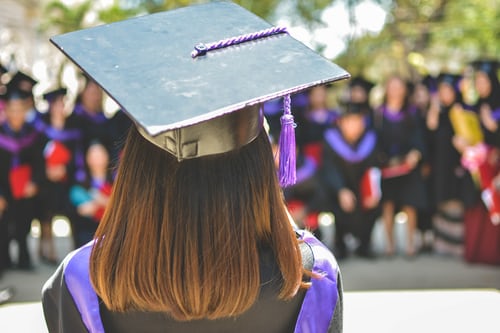Does the educational system promote conscientious work to promote peace in schools and classrooms? Are teachers trained to promote a culture of peace? Why are many of the aspects that have to do with peace not recognized in the official curriculum and become part of the hidden curriculum?
These and other issues should be of special interest to the majority of society, since our students, children, cousins, brothers... are part of the educational system and, therefore, of the active society of the near future.
Peace education
Education for peace It emphasizes the need to transform the educational system from its essence, starting from its foundations and rethinking the official curriculum. Which entails an ideal of justice and equity according to which respect, tolerance and the promotion of human rights can be understood (Lederach, 2000).
The idea of peace education, understood in this way, represents a union between knowledge, values and capabilities, and advocates an education that also enables action, encouraging the development of critical thinking and the acquisition of teaching skills, for reasoned intellectual reflection and collective work (Cabezudo, 2012, p. 145), in the same way that it equips its participants with a capacity for positive thinking with which to transform conflicts through peaceful means (Gómez and Amaral, 2013). Therefore, training in peace education is integrating the social competencies of education for life in a relevant and effective conceptual framework that contrasts with the current faction that combats violence (Lira, Vela-Álvarez, Vela-Lira, 2014). In this way, the only way to safeguard the rights of all individuals who belong to the educational system is through the implementation of the Universal Declaration of Human Rights.
Universal Declaration of Human Rights
In 2013, the United Nations High Commissioner for Human Rights declared that “the right to education is a right to inclusive education.” This school is only possible through the establishment of the legal, epistemological and practical bases so that human diversity is recognized and addressed in equity, through attention and recognition of differences. Therefore, we must create an educational management model based on the principles and values of peace culture. Wouldn't it be the mediation a good strategy so that these principles could be established and when conflicts arise, be able to address them for the sake of said consolidation of the culture of peace in school centers and classrooms?
Educational Mediation

Educational mediation is presented as a possibility to cement a true culture of peace, since it involves creating and developing in the educational center a mediation service for the collaborative and peaceful resolution of conflicts in which they can participate as mediators and as users. /as the different groups of the school community (students, teachers, non-teaching staff, parents, etc.) (GEUZ, 2008).
Of all the possibilities for building mediation programs, the horizontal model It becomes a great possibility for the peaceful resolution of conflicts, since the fundamental characteristic of these mediation programs is that the colleagues of the parties in conflict are the mediators, which means a balm so that problems are resolved due to interaction between equals. Thus, if there are two students who have the conflict, the mediators will also be students and if the conflict occurs between a student and a teacher, the mediators They will also be one member of the student body and another of the teaching staff (GEUZ, 2008). Which will effectively enable Students are aware of the importance of compliance with standards and, in turn, this will lead them to keep in mind that living with other people can become complicated, but not necessarily prone to violence.
Therefore, a true peace-promoting school culture is one that develops an attitude of mutual respect, equality and equity between people, creates the foundations for tolerance and mutual love, as well as the promotion and development of autonomous thinking based on the common good. And, as we said, school mediation is one of the most consistent tools so that this can occur in our school centers and classrooms.
Do you still not know our courses? and master in mediation? After reading this, be sure to visit our website where We introduce you to our great training offer.
Bibliography:
Cabezudo, A. (2012). Education for peace: a construction of memory, truth and justice. Pedagogical challenge of our time in Latin America. Ciências Sociais Unisinos, 48(2), 139-145.
GEUZ (2008). How to launch, step by step, a school peer mediation program. Department of Justice and Public Administration of the Basque Government.
Gómez, A. and Amaral, P. (2013). Theory of peace education in Latin America. Academicus. Journal of Educational Sciences, 1(3), 6-19
Lederach, J.P. (2000). The alphabet of peace and conflict. Waterfall.
Lira, Y., Vela-Álvarez, HA and Vela-Lira, HA (2014). Peace education as a teaching competence: contributions to the educational system. Educational innovation, 14(64), 123-144.





Without a doubt, mediation and conflict resolution in the educational environment is essential. Teachers and other professionals should be trained in this regard.